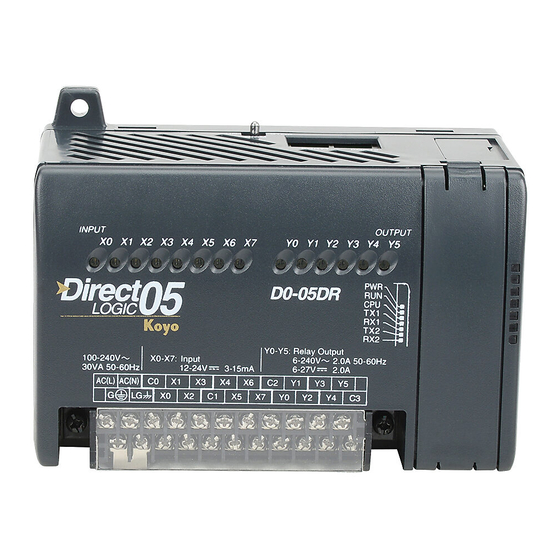Advertisement
C
C
C
hapter
hapter
hapter
1
1
1
G
S
ettinG
tarted
In This Chapter...
Introduction ............................................................................................................... 1-2
Conventions Used ...................................................................................................... 1-3
DL05 Micro PLC Components ................................................................................... 1-4
I/O Selection Quick Chart ......................................................................................... 1-5
Quick Start for PLC Checkout and Programming..................................................... 1-6
Steps to Designing a Successful System ................................................................. 1-10
Questions and Answers about DL05 Micro PLCs .................................................... 1-12
Advertisement









Need help?
Do you have a question about the DL05 Series and is the answer not in the manual?
Questions and answers